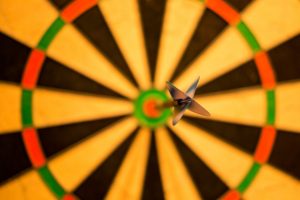In 2007, researchers at Oxford University started peering into the brains of newborn babies. What they found was surprising.
After comparing the newborn brains to the normal adult human, the researchers realized that the average adult had 41 percent fewer neurons than the average newborn. [1]
At first glance, this discovery didn’t make sense. If babies have more neurons, then why are adults smarter and more skilled?
Let’s talk about what is going on here, why this is important, and what it has to do with building better habits and mastering your mental and physical performance.
The Power of Synaptic Pruning
There is a phenomenon that happens as we age called synaptic pruning. Synapses are connections between the neurons in your brain. The basic idea is that your brain prunes away connections between neurons that don’t get used and builds up connections that get used more frequently.
For example, if you practice playing the piano for 10 years, then your brain will strengthen the connections between those musical neurons. The more you play, the stronger the connections become. Not only that, the connections become faster and more efficient each time you practice. As your brain builds stronger and faster connections between neurons, you can express your skills with more ease and expertise. It is a biological change that leads to skill development.
Meanwhile, someone else who has never played the piano is not strengthening those connections in their brain. As a result, the brain prunes away those unused connections and allocates energy toward building connections for other life skills.
This explains the difference between newborn brains and adult brains. Babies are born with brains that are like a blank canvas. Everything is a possibility, but they don’t have strong connections anywhere. The adults, however, have pruned away a good deal of their neurons, but they have very strong connections that support certain skills.
Now for the fun part. Let’s talk about how synaptic pruning plays an important role in building new habits.
Habit Stacking
Synaptic pruning occurs with every habit you build. As we’ve covered, your brain builds a strong network of neurons to support your current behaviors. The more you do something, the stronger and more efficient the connection becomes.
You probably have very strong habits and connections that you take for granted each day. For example, your brain is probably very efficient at remembering to take a shower each morning or to brew your morning cup of coffee or to open the blinds when the sun rises … or thousands of other daily habits. You can take advantage of these strong connections to build new habits.
How?
The quickest way to build a new habit into your life is to stack it on top of a current habit.
This is a concept called “habit stacking” because you stack your new habit on top of a current habit. Because the current habit is strongly wired into your brain already, you can add a new habit into this fast and efficient network of neurons more quickly than if you tried to build a new path from scratch. (Note: I’m not the first person to figure this out. [2])
Habit Stacking Examples
To use habit stacking, just fill out this sentence…
After/Before [CURRENT HABIT], I will [NEW HABIT].
Here are some habit stacking examples…
- Meditation Habit: After I brew my morning coffee, I will meditate for one minute.
- Pushup Habit: Before I take my morning shower, I will do 10 pushups.
- Flossing Habit: After I brush my teeth, I will floss my teeth.
- Gratitude Habit: Before I eat my first bite of dinner, I will say one thing I am grateful for that day.
- Networking Habit: After I get back from my lunch break, I will send one email to someone I want to meet.
- Stretching Habit: After I finish my last set of squats, I will stretch my hamstrings.
Again, the reason habit stacking works so well is that your current habits are already built into your brain. You have patterns and behaviors that have been strengthened over years. By linking your new habits to a cycle that is already built into your brain, you make it more likely that you’ll stick to the new behavior.
The Next Step
To get started, simply write out a list of the current habits that you do each day. (Don’t forget about all the boring everyday routines.) Then, write out a second list of the habits you want to start. Finally, pick one habit and look for the appropriate place to stack it.
As a final note, you need to make sure that you stack habits of an appropriate size. Your new behavior needs to be small at the start. You can worry about escalating and improving later.
Happy habit stacking!
P.S.
If you are interested in more strategies for increasing your willpower and sticking to better habits, I explain all sorts of techniques and the science behind them in my Habits Workshop.
This article was originally published on JamesClear.com.
Sources
- Excess of Neurons in the Human Newborn Mediodorsal Thalamus Compared with That of the Adult by Maja Abitz, Rune Damgaard Nielsen, Edward G. Jones, Henning Laursen, Niels Graem and Bente Pakkenberg
- BJ Fogg recommends a similar strategy to habit stacking in his Tiny Habits program and Courtney Carver, Julien Smith, and others have mentioned the idea of habit stacking before.
Thanks to SJ Scott for inspiring me to use the word “habit stacking” from his book by that name. I haven’t read it, but I like the phrase!
(250)






